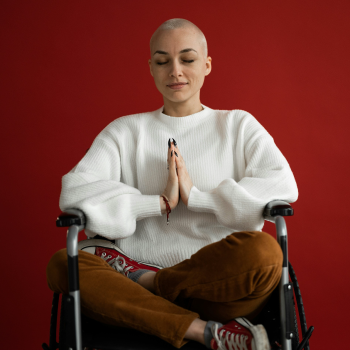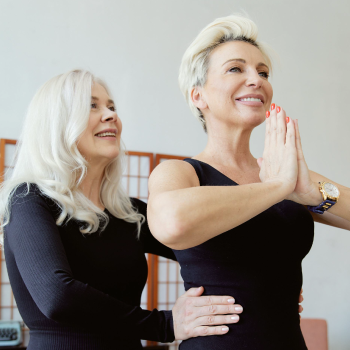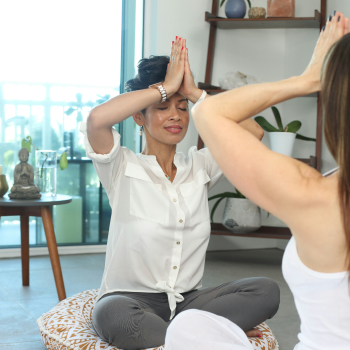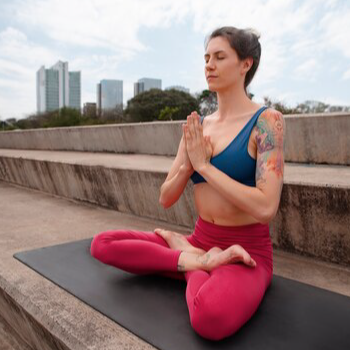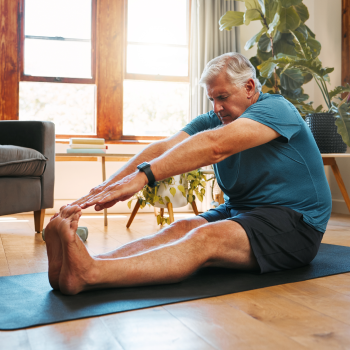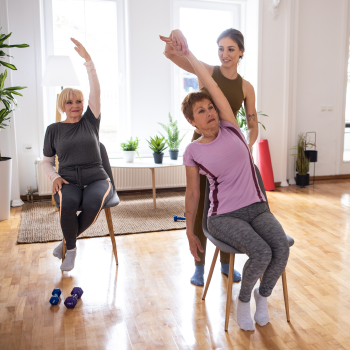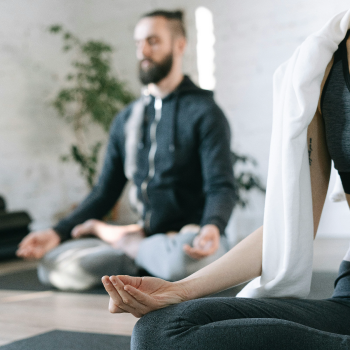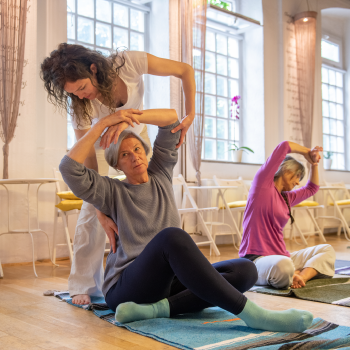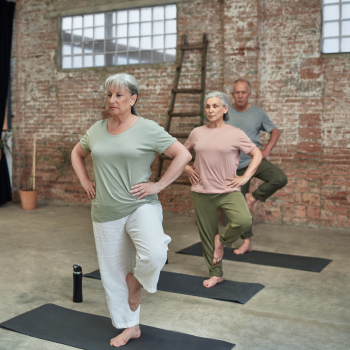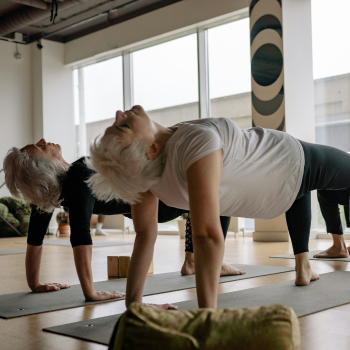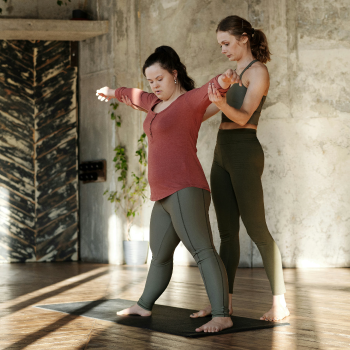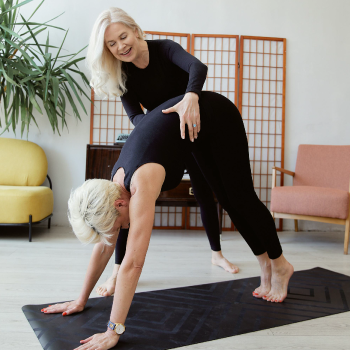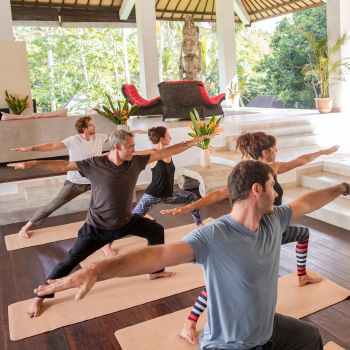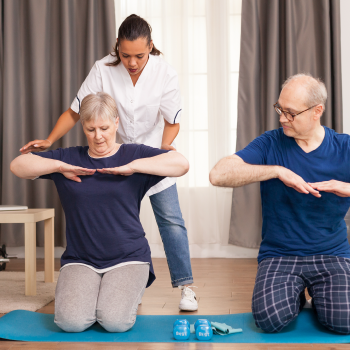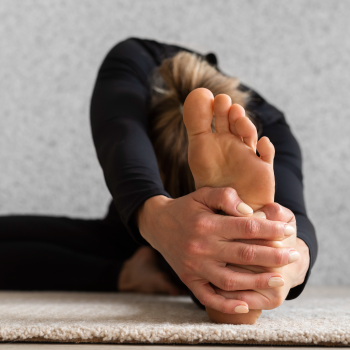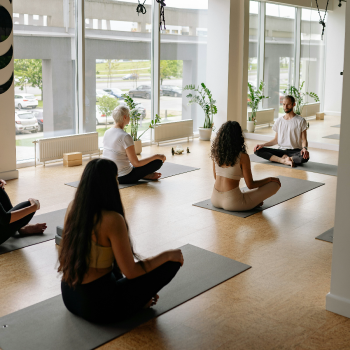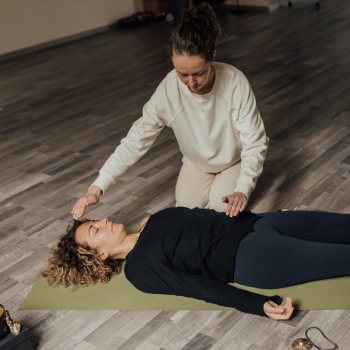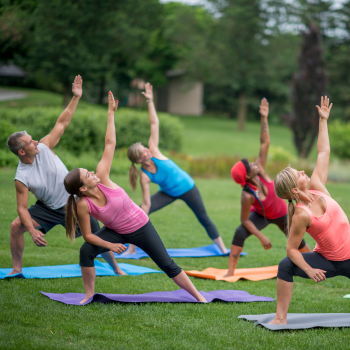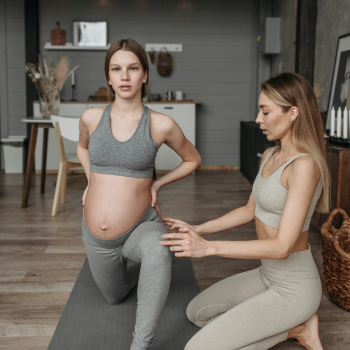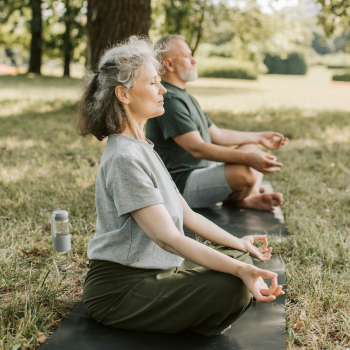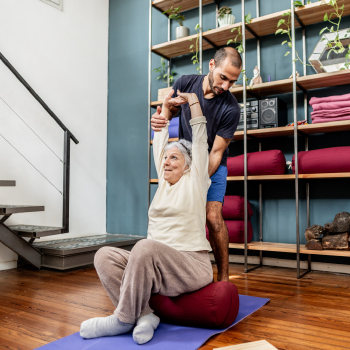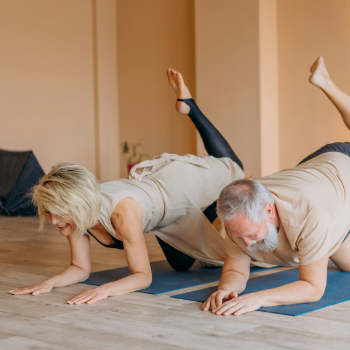Introduction
Objective: To explore the integration of yoga therapy into CIPM, emphasizing its biomedical and psychosocial contributions to managing rheumatic diseases, migraines, fibromyalgia, and immune functioning.
Background: Highlighting the challenges in current pain-care programs and the potential role of yoga therapy in offering accessible, inclusive, and effective solutions.
Biomedical Contributions of Yoga Therapy
Rheumatic Diseases: Examining evidence of yoga therapy's impact on osteoarthritis (OA), rheumatoid arthritis (RA), and systemic lupus erythematosus, including improvements in function, pain management, and physical mobility.
Migraines and Fibromyalgia: Presenting research findings on yoga’s effectiveness in reducing symptoms and improving quality of life in conditions like migraines and fibromyalgia.
Immune Functioning: Discussing the potential of yoga therapy in enhancing immune response and reducing proinflammatory markers.
Psychosocial Contributions of Yoga Therapy
Mental Health Benefits: Detailing the positive effects of yoga on mood disorders, anxiety, stress management, and PTSD, with a focus on self-regulation and resilience.
Social Well-being: Highlighting the role of yoga therapy in improving social well-being and reducing perceived social isolation, particularly in group settings.
Recommendations for Integrating Yoga Therapy in Pain Management
Policy and Practice Changes: Advocating for the inclusion of yoga therapy in best-practice guidelines and healthcare policies.
Interdisciplinary Collaboration: Encouraging collaboration between yoga therapists and healthcare providers to enhance pain management strategies.
Conclusion
Yoga Therapy's Potential: Emphasizing yoga therapy's role as a holistic, patient-centered approach in pain management, capable of addressing both biomedical and psychosocial aspects of pain.
Future Directions: Calling for continued research, awareness, and policy support to fully integrate yoga therapy into mainstream pain management practices.
Emotional State and Its Influence on Postural Control: A Neuroanatomical Perspective
Introduction
Objective: To examine how emotional states modulate autonomic and somatic nervous system activities in postural control, focusing on the neuroanatomical connections and their implications in balance and movement.
Background: Research highlights the significant interplay between emotional states (like anxiety and fear) and nervous system activities in postural control. This case study explores these relationships, considering their importance in clinical and research settings for understanding and improving postural control.
Neuroanatomical Links in Postural Control
Reticular Formation (RF): Acts as a key integrative site in the brainstem, linking emotional state with ANS and somatic NS activities. RF influences autonomic control, respiration, and postural muscle tone, playing a pivotal role in balance and movement.
Limbic System: Encompasses neural substrates like the thalamus, hypothalamus, hippocampus, amygdala, cingulate cortex, and basal ganglia. These structures are integral to processing emotions, memory, and motivation, and have bidirectional connections with the RF. They influence both emotional responses and physiological states including muscle tone and heart rate.
Emotional States and Postural Control
Physiological and Behavioral Evidence: Demonstrates that fear, anxiety, and other emotional states trigger sympathetic nervous system responses affecting postural control. Increased arousal, for instance, correlates with changes in postural sway.
Cognitive-Emotional State: Encompasses emotion, conscious feelings, and cognitive contributions. This holistic state impacts the nervous system's readiness for action, influencing balance and motor responses during postural adjustments.
Clinical Implications
Disordered/Altered Emotional States: Conditions like Parkinson’s disease present altered emotional and ANS processing, affecting postural control. Understanding these links is vital for developing targeted interventions.
Assessment and Management: Balance assessments in clinical and research settings must consider individuals’ emotional states, as they significantly impact postural control outcomes.
Conclusion
Significance: The interplay between emotional states and postural control underscores the importance of considering psychological factors in balance and movement disorders. Neuroanatomical connections between the limbic system, ANS, and somatic NS play a crucial role in this dynamic.
Future Directions: Emphasizes the need for further research and methodological advancements to deepen our understanding of how emotional states influence postural control, potentially leading to more effective interventions for balance disorders.
The Influence of Emotional State on Postural Control: Unraveling the Neurophysiological Connections
Introduction
Objective: To investigate how emotional states, particularly fear and anxiety, affect postural control by influencing the autonomic and somatic nervous systems.
Context: This case study explores the research findings that demonstrate the direct and indirect impacts of emotional states on postural control, emphasizing the integrated activities of the autonomic nervous system (ANS) and somatic nervous system (somatic NS).
Integrated ANS and Somatic NS Activity in Postural Control
Physiological Integration: Examining how the ANS and somatic NS are routinely coordinated in response to emotional states, affecting postural stability.
Fight or Flight Response: Discussing the physiological changes during heightened emotional states like fear and anxiety, and their impact on muscle tension and postural control.
Indirect and Direct Associations Between Emotional State and Postural Control
Indirect Influences: Analyzing how emotional states indirectly affect postural control through cardiovascular and respiratory responses, impacting core muscle activation and balance.
Direct Influences: Exploring the direct neuro-modulatory effects of emotional states on postural control, particularly in reactive balance scenarios.
Evidence from Behavioral Studies
Postural Threat Models: Reviewing studies where fear and anxiety are induced through height-induced threats, revealing increased physiological arousal and altered postural sway.
Core Muscle Activation and Breathing Patterns: Understanding the connection between emotional states, breathing rate, and core muscle activation, and their collective impact on postural stability.
Sensory Processing and Attentional Allocation: Discussing how emotional states affect sensory processing and attention, subsequently influencing postural control.
Clinical Implications and Future Directions
Implications in Clinical Settings: Emphasizing the need to consider emotional states in postural control assessments and treatments, particularly for individuals with anxiety-related balance disorders.
Future Research: Advocating for more studies focusing on the comprehensive cognitive-emotional state's impact on postural control to enhance understanding and intervention strategies.
Conclusion
Significance of Study: Highlighting the critical role of emotional states in postural control and the necessity of integrating these factors into clinical assessments and treatments for balance disorders.
Integration of Findings: The case study underscores the complexity of the interplay between emotional states, ANS, and somatic NS, and their collective impact on postural stability.
Exploring the Impact of Emotional States on Postural Control: Insights from Neurophysiological and Behavioral Studies
Introduction
Objective: To examine how changes in emotional states, especially anxiety and fear, influence postural control through alterations in the autonomic and somatic nervous systems.
Background: Building upon existing research, this case study delves into the direct and indirect effects of emotional states on postural control, with a particular focus on heightened emotional responses and their neurophysiological underpinnings.
Direct and Indirect Influences of Emotional States on Postural Control
Neurophysiological Basis: Discussing how conscious balance processing and emotional states affect postural sway, particularly in challenging balance conditions.
Height-Induced Threat Studies: Reviewing how height-induced threats impact postural control by inducing fear and anxiety, leading to changes in center of pressure (COP) adjustments.
Spinal Reflexes and Postural Threat: Exploring studies on spinal reflex excitability and its relationship with postural control under threatening conditions.
Sensory Processing and Postural Control: Analyzing how emotional states alter sensory processing and subsequently influence postural stability.
Clinical Implications and Future Directions
Repeated Exposure to Threats: Investigating how repeated exposure to postural threats affects emotional responses and postural control, noting that some threat-induced changes in balance persist despite reduced emotional response.
Emotional State and Movement Processing: Considering the implications of heightened emotional states and conscious movement processing on postural control strategies.
Social Evaluation Threats: Examining the effects of social evaluation threats on postural control, highlighting the role of both direct and indirect mechanisms in shaping behavioral outcomes.
Disorders of Anxiety and Emotion Processing: Discussing the links between disorders of emotional processing, such as anxiety, and postural control, noting the complex interplay between psychological states and sensorimotor functions.
Conclusion
Integration of Findings: This case study underscores the intricate relationship between emotional states, particularly anxiety and fear, and their impact on postural control. It highlights the importance of considering both direct and indirect neurophysiological pathways in understanding and addressing balance disorders.
Significance for Clinical Practice: Emphasizes the need for a holistic approach in assessing and treating balance disorders, taking into account the cognitive-emotional state of individuals for more effective interventions.
Written By: Ram on 12-03-2023

